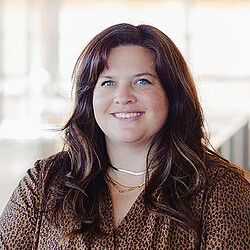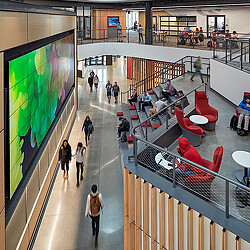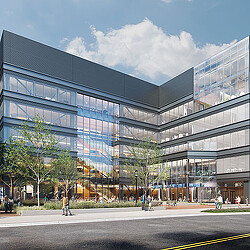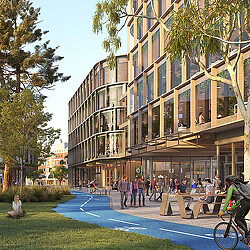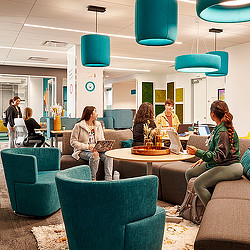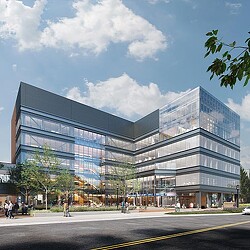How Business Schools Are Embracing Workforce Preparedness and Student Well-Being
To prepare students for success, campuses are becoming interdisciplinary, flexible environments that foster career readiness and holistic growth.
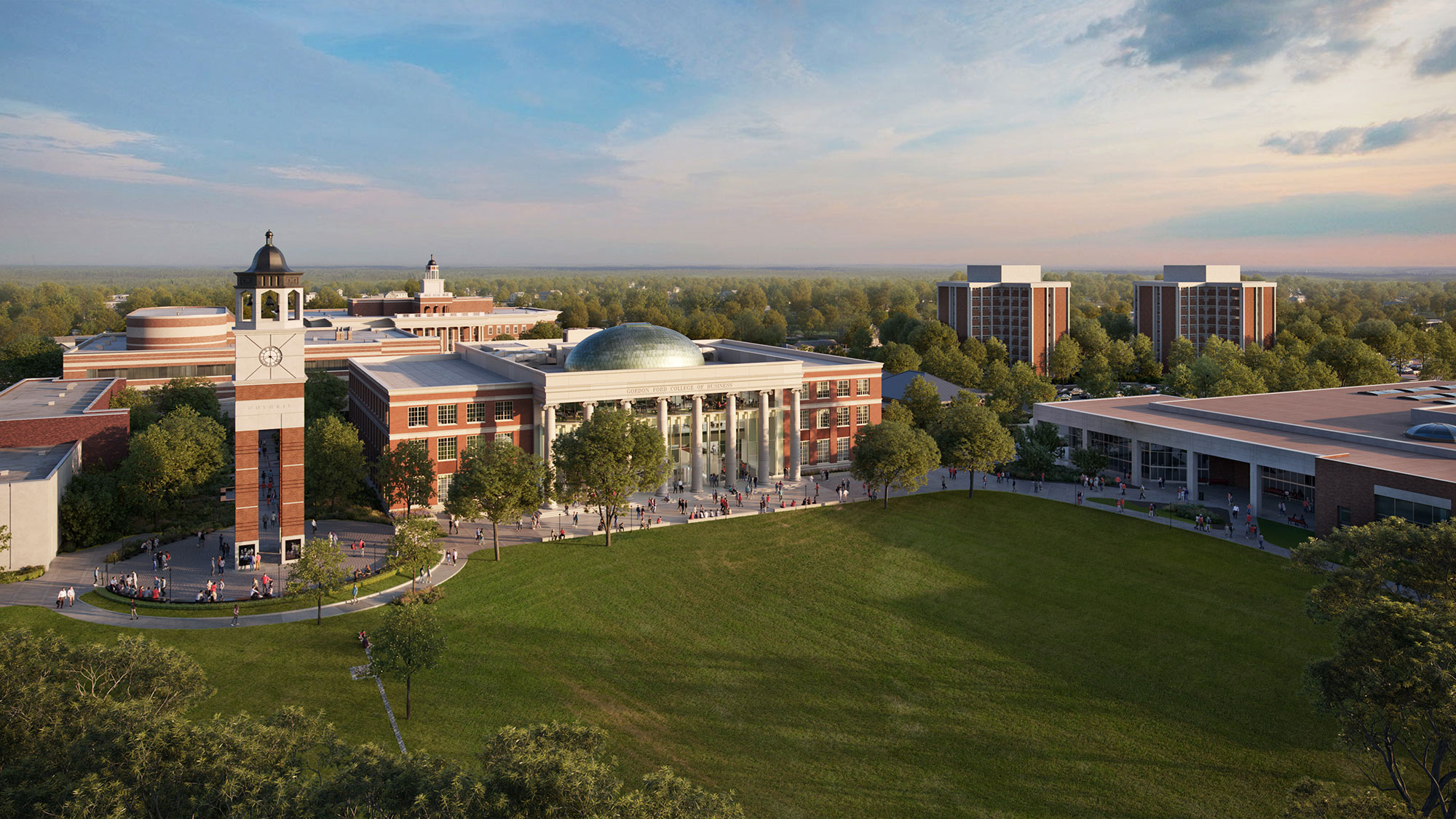
Today’s employers now value real-world experience, problem-solving, and adaptability more than academic credentials alone. As the rise of AI and other technologies transforms industries, new skill sets will be required, and business schools must adapt to prepare students for a dynamic labor market. At the same time, students are increasingly seeking spaces that promote their holistic health and well-being, and higher education institutions that respond will have a competitive edge.
In response, business schools are placing a heightened emphasis on workforce preparedness and a growing commitment to student support and well-being. These priorities are reshaping campus design and driving the creation of interdisciplinary, flexible learning environments that foster both professional readiness and holistic student success.
Key takeaways:
- Workforce preparedness fuels interdisciplinary learning as business schools redesign campuses with cross-disciplinary, flexible spaces that mirror real-world settings and foster career readiness.
- Real-world learning spaces are essential for experiential education and long-term student engagement — from simulation labs to prototyping facilities and adaptable classrooms.
- Student well-being enhances engagement and retention, with institutions prioritizing inclusive resources and hospitality-forward spaces to support emotional and academic success.
- Holistic design future-proofs success by integrating workforce readiness with wellness strategies.
Workforce Preparedness Fuels Interdisciplinary Learning
To equip students for dynamic careers, academic institutions are investing in purpose-built, adaptable spaces that support collaboration and future-focused programming. By leveraging quantitative data and qualitative insights from our Strategy teams to right-size formal teaching spaces, optimize scheduling, and identify opportunities for cross-disciplinary initiatives, we’re designing campus environments that not only anticipate future trends, but also promote collaboration across departments, fostering a culture of innovative thinking.
Two recent examples of future-ready business schools — Western Kentucky University-Gordon Ford College of Business and Purdue University-Mitch Daniels College of Business — are preparing students to learn, live, build relationships, and collaborate. With strategically curated innovative design, students have access to spaces that emulate their future, allowing them to aspire to new ways of thinking and greater success.
At WKU, core objectives include creating a business college that students want to stay in, before and after scheduled classes, and ensuring that spaces stay flexible to facilitate applied learning as they evolve to serve current and future industry needs. A great example of this future-oriented approach is the simulation lab, with augmented and virtual reality tools for marketing strategy exploration, and a furniture-free floor design that enables immersive AR/VR experiences.
Purdue’s Mitch Daniels College of Business focuses on the integration of technology, new and transformative learning opportunities, and an increase in enrollment, graduates, and scholars. Beyond being a new site for learning, the college prepares students for the future by mimicking corporate workplace environments through an integrated business and engineering program with a full prototyping and engineering lab. This allows students to merge technical and business skills in real-world development scenarios.
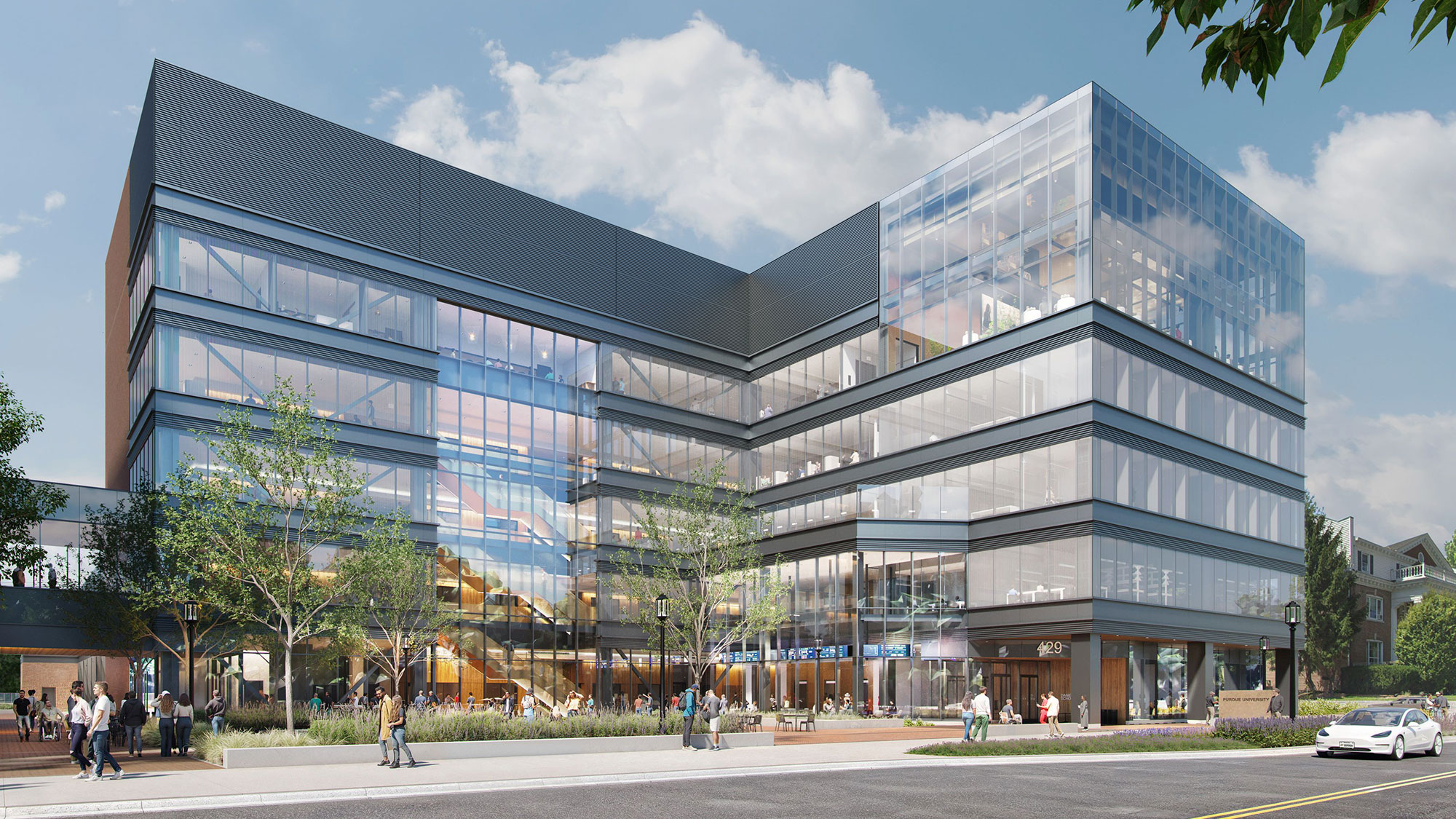
Both universities are developing compelling learning environments through the following approaches and implementations to ensure students have the best possible opportunities to succeed:
Flexible Classrooms & Active Learning
Business schools are embracing flexible classrooms with adaptable layouts that support lectures, breakout sessions, and experiential learning. At WKU, sales classrooms simulate real-world environments using varied furniture and spatial configurations, while expandable rooms and advanced AV systems accommodate hybrid learning and community engagement.
Real-World Simulation Spaces
To prepare students for real-world challenges, campuses are integrating prototyping and simulation labs, Bloomberg terminals, and project rooms that allow students to work on long-term ventures. These environments allow students to explore marketing strategies, develop products, and collaborate on projects without disruption.
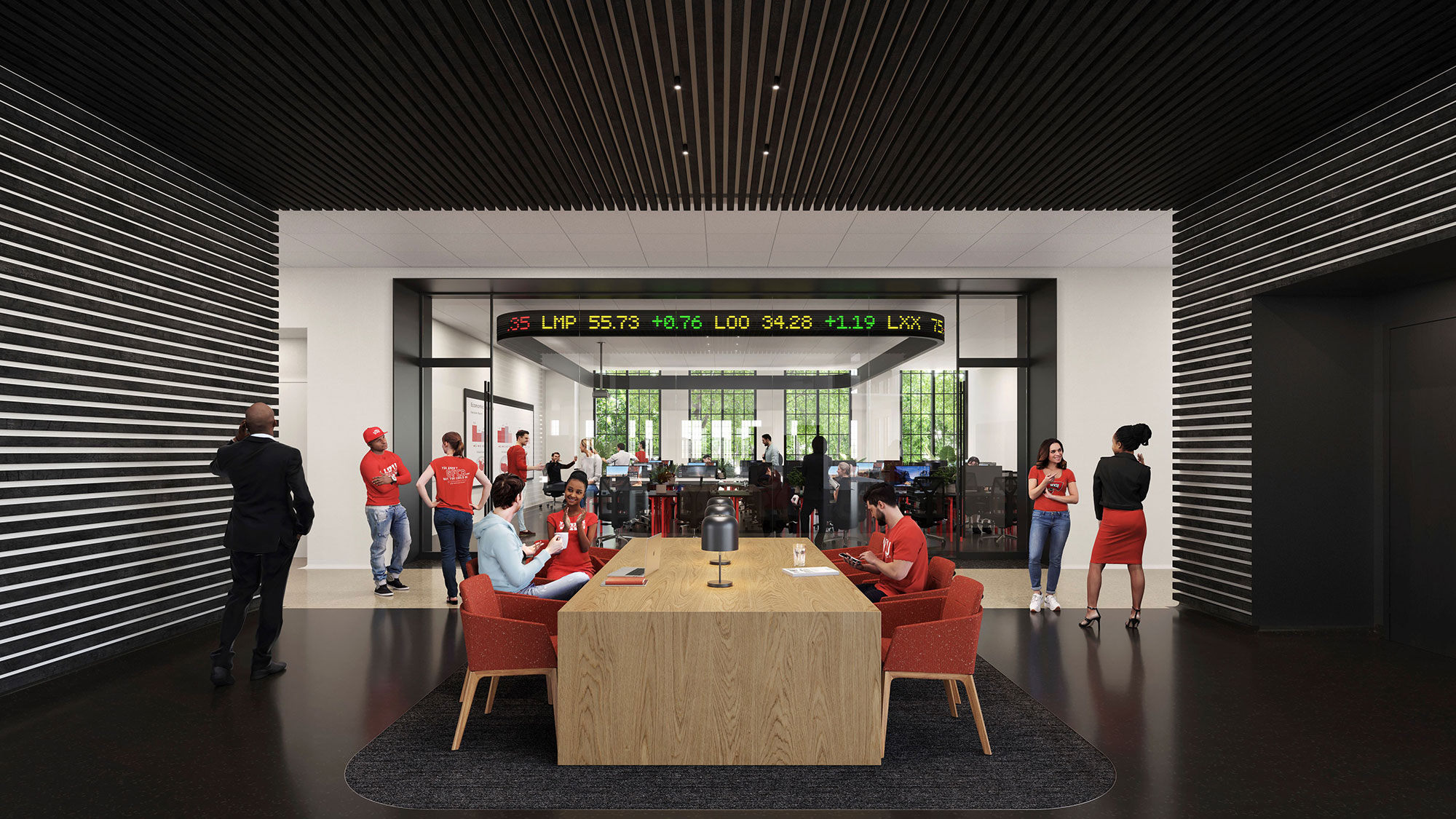
Business & Innovation Integration
Institutions are investing in incubators and business centers to foster partnerships between students and industry professionals. For example, Purdue’s Market Professional classroom and coworking spaces support VIP guest lectures and entrepreneurial collaboration. These integrated spaces allow students to develop new skills and real-world insights.
Student Well-Being Shapes Campus Experience
Supporting student health is no longer optional; it’s central to retention, engagement, and success. Design strategies now prioritize hospitality-forward environments that foster belonging and daily support through the following key approaches:
Student-Centered Resources
Business schools are increasingly creating success centers, tutoring hubs, clothes closets, and other student-centered resources to reduce barriers to participation and foster belonging.
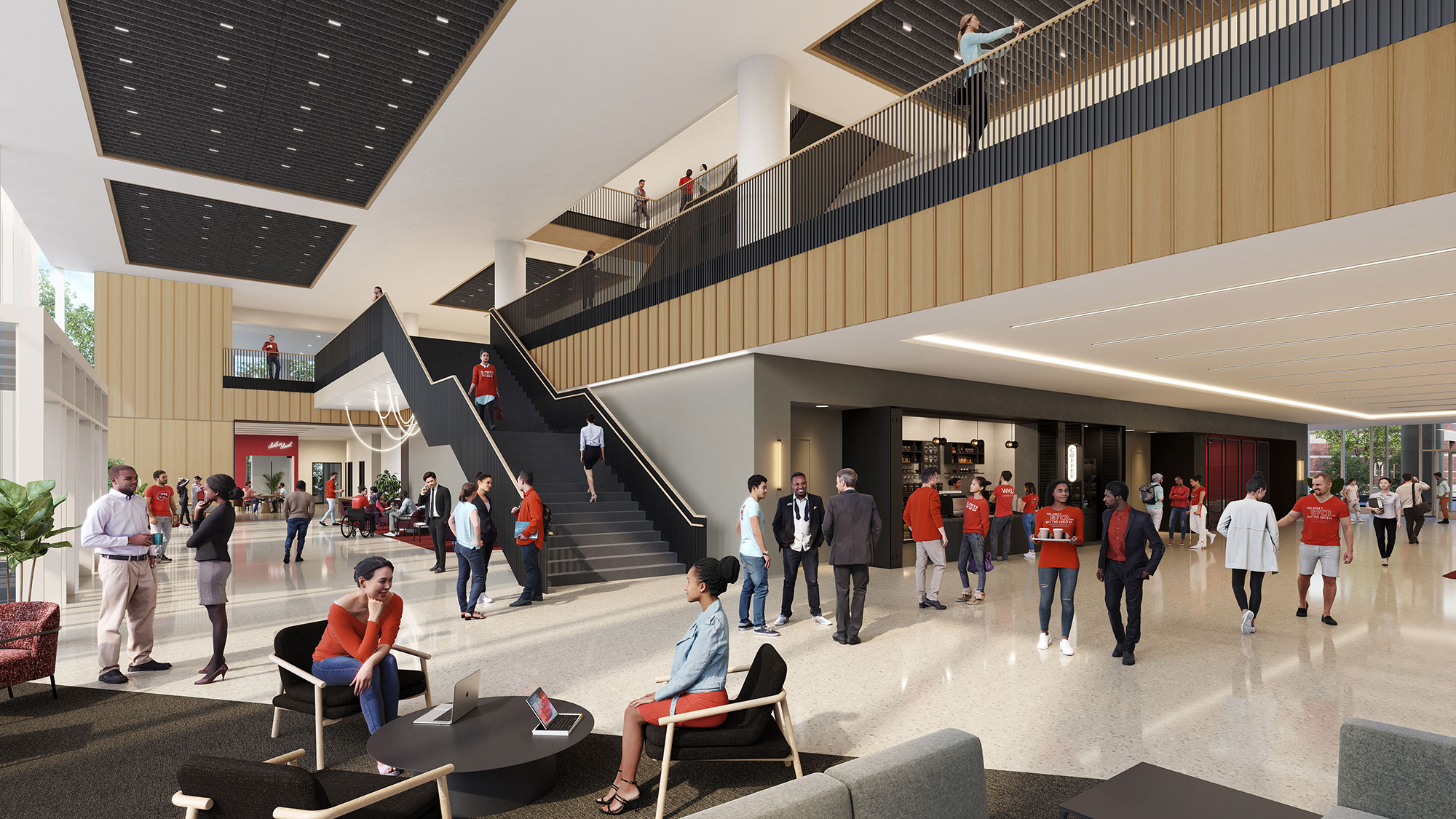
Daily Support Infrastructure
Daily support infrastructure is also evolving to meet students’ social and academic needs. Full-service cafés and informal gathering areas serve as “third spaces” for connection and decompression, while diverse study zones — including quiet areas, group rooms, and open lounges — accommodate a range of learning styles. At Purdue, boardroom-style conference rooms and private phone booths support professional development and internship interviews.
Faculty Accessibility
Faculty spaces are being reimagined through barrier-free office suites strategically placed near coworking zones. These suites enhance mentorship opportunities and make faculty more approachable. By moving away from traditional, isolated faculty corridors, institutions can foster stronger student-faculty engagement.
Where Workforce Preparedness Meets Well-Being
Workforce preparedness and well-being are deeply interconnected. Preparing students for the workforce means supporting their emotional, social, and academic needs by offering flexible spaces that serve both academic rigor and wellness, interdisciplinary programs to thrive when paired with robust support services, and career readiness that includes confidence, resilience, and a sense of belonging. Institutions that integrate these priorities are better positioned to drive long-term student success.
Future-Proofing Student Success
By aligning campus design with evolving educational and workforce demands, business schools like those at WKU and Purdue empower students to thrive academically, professionally, and personally, setting a new standard for higher education.
For media inquiries, email .
